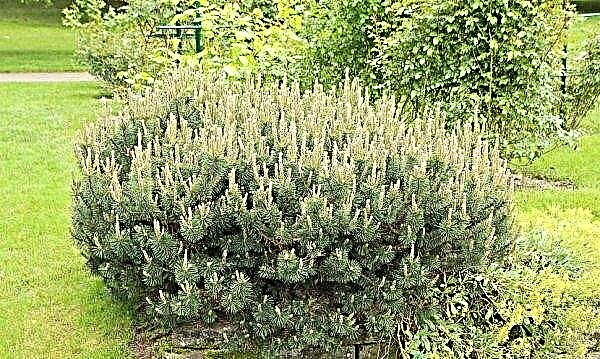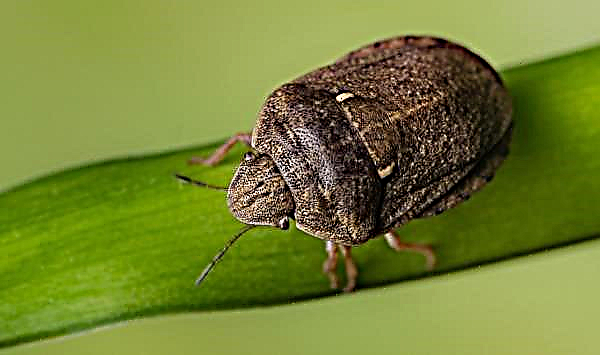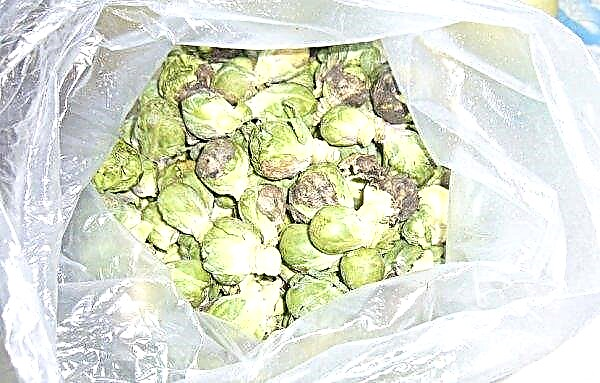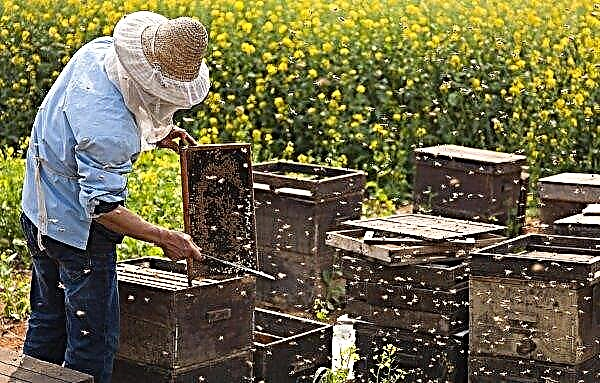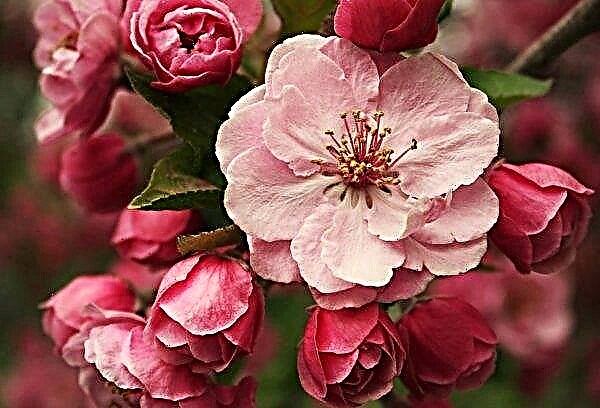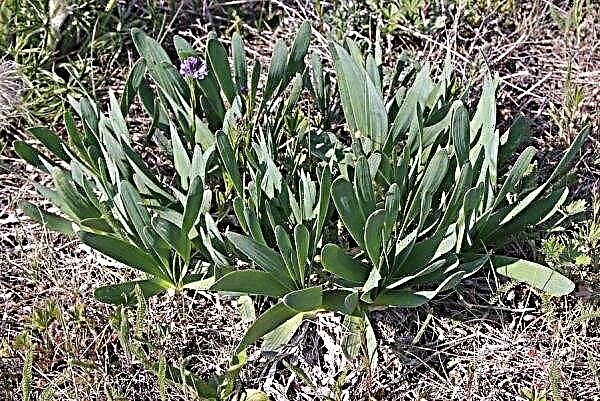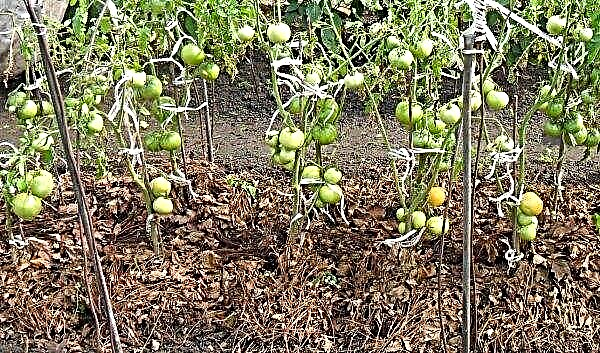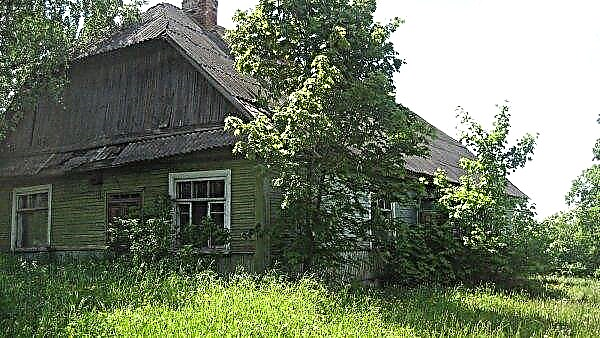Violets are popular beautiful indoor plants, the cultivation of which requires considerable effort from their owner. To make them happy with their decorativeness, they need to create a favorable microclimate for them and place them in the right conditions. This flower puts forward special requirements to the soil.
Features of growing and caring for violets
The main conditions that such flowers need to be created are heat, bright light, high humidity. They must be placed in a well-lit place with diffused lighting and at the same time protected from sunlight. Daylight hours should be 13-14 hours. In winter, you need to install additional lighting.
The optimal place for the flower to grow is northeastern and northwestern window sills. When growing on the south side, shading is needed.
Did you know? A collector from Odessa collected 3,500 varieties of violets in his apartment, among them grown by astronauts in orbit. This is the largest collection in Europe. The gardener takes 800 liters of water per week to water the flowers, and he spends $ 30–40 per month for lighting them.
The best decorativeness and stable growth are observed in those plants that are grown at a temperature of + 20 ... + 22 ° C.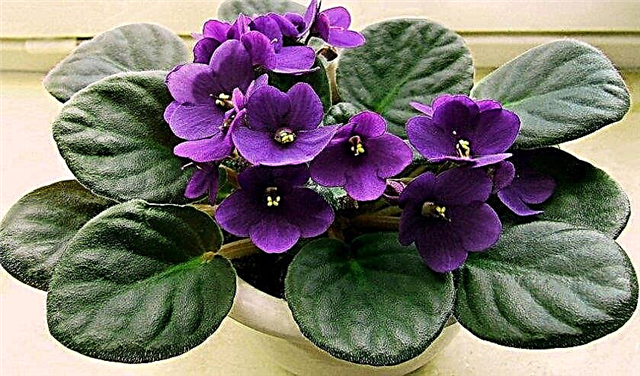 Violets do not tolerate 3 errors in care:
Violets do not tolerate 3 errors in care:
- excessive and frequent watering;
- exposure to drafts;
- severe drying of the soil.
Therefore, the flower needs to be protected from these factors.
Watering should be moderate and must be carried out in a pan or wick way (connecting the pot with a violet and a container of water with a cord through which water seeps). It is recommended to produce 1-2 hydrations in 7 days.
For irrigation use rain, filtered or settled at room temperature for 2 days. After 30-40 minutes after humidification, the remaining water in the pan must be drained. You do not need to allow it to stagnate - this increases the risk of root decay.
Spraying a flower does not like. To maintain the required high humidity, at a level of 60–70%, you need to install an air humidifier, wipe the leaves with a damp cloth, spray air next to the flower so that drops do not fall on it, place the pot on a pallet with wet pebbles or expanded clay.
Important! Watering the violet from above is not recommended. Drops on leaves and stems can cause burns and rot.
During the growing season, flowers need to be fed. This will help preserve the beauty of the leaves, achieve a long and abundant flowering, health of the bush. At a young age, more nitrogen-containing fertilizers are applied, in the mature - potash and phosphorus fertilizers. Use liquid root baits designed specifically for violets.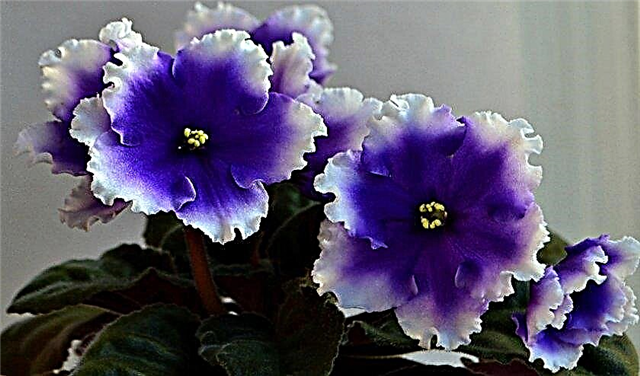 Violets degenerate very quickly and usually renew them every 2-3 years. Transplantation is carried out once a year by transshipment method.
Violets degenerate very quickly and usually renew them every 2-3 years. Transplantation is carried out once a year by transshipment method.
These flowers can grow in any pots - plastic or ceramic. But it is important to select them according to the size of the plant, because in fairly large containers they will refuse to bloom, and in small ones they will grow poorly. It is also important that there are drainage holes in the pot.
In specialized stores you can buy special pots for violets - they provide a place for draining unnecessary water and a special hole for supplying moisture.
Essential soil composition for violets
For the normal growth and development of the flower, he needs a special soil - loose, light, with good air and water permeability. The level of its acidity should be in the range of 5.5–6.5 pH. Ignoring this indicator leads to the fact that the plant poorly assimilates nutrients from the soil and stops growing.
A discoloration of the leaves may also occur. Reducing acidity is done by adding dolomite flour to the soil. Rise - by mixing peat.
The following components must be included in the soil mixture for planting violets:
- nutrient soil;
- fillers;
- drainage.
Nutrient soil
The basis of the soil mixture are:
- sheet earth;
- turf.
Leafy soil is gathered under deciduous trees. Sod - in areas where perennial grasses grow. Soil should be taken in clean areas, away from landfills, trash, polluting enterprises.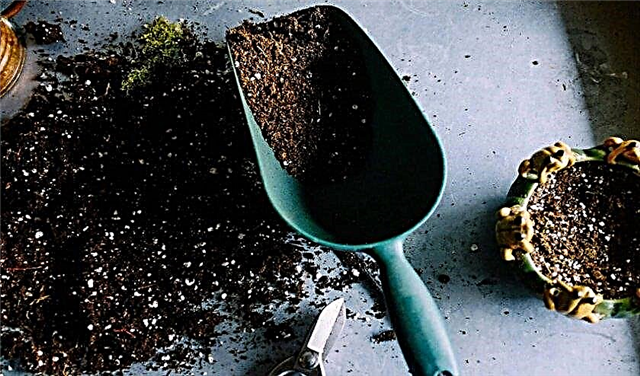 Also, biohumus and compost can be considered as the main substrate.
Also, biohumus and compost can be considered as the main substrate.
Fillers
Fillers for the soil for planting violets are:
- coniferous soil - it is extracted from the lower soil layer in areas where conifers grow;
- peaty soil.
Moisture holders and baking powder
The main mixture is supplemented with such loosening components:
- vermiculitis;
- perlite;
- charcoal;
- sand;
- sphagnum moss;
- coconut fiber.
Good violet drainage is important for violets. It is necessary to drain water, prevent its stagnation and the development of rot.
Drainage is made from:
- expanded clay;
- pebbles;
- broken brick;
- coarse sand;
- charcoal.
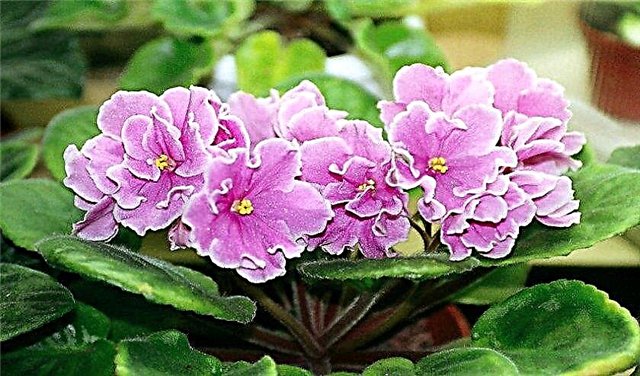
How to choose ready-made primer
Soil for planting flowers can be purchased at a specialized store. On the packaging of a suitable soil it is indicated: "Saintpaulia", "Violet", "For sowing seeds and transplanting seedlings."
Most popular manufacturers:
- ASP GREENWORLD;
- Terra Vit
- Academy of Growth;
- "Bereginya."
Purchased substrate has one important advantage - it is already pickled and ready for planting. There are no bacteria, fungi, microbes, pests in it, therefore it does not need additional processing, it can only be doused with boiling water - while manually made soil is subject to obligatory disinfection.
The disadvantage of this soil is that it is very light: when watering, all the water passes through it without stopping, and settles at the bottom. Because of this, many flower growers prefer to supplement the purchased soil with various additives.
One of the options: mix 5 liters of the prepared soil with 0.5 liters of biohumus, 0.5 liters of perlite, 0.5 liters of vermiculite and 0.5 liters of finely chopped sphagnum. Such a soil will have all the necessary properties for the comfortable growth of violets.
Also, some flower growers buy a base for the soil and add elements like the above to improve the characteristics. Usually they take soil from high peat.
Did you know? Violet is appreciated for its delicate aroma. Violet scents include well-known perfume brands such as Dolce & amp; Gabbana, Hugo Boss, Elizabeth Arden, Gucci, Christian Dior.
How to make a substrate with your own hands at home
There are several recipes for making the soil mixture for violets. Each of the owners of violets can choose a ready-made one or make their own, combining the ingredients listed above. The main thing is that in the end you get a loose, light, uniform substrate that can conduct air and water well to the root system.
We suggest you familiarize yourself with one of the most affordable recipes.
DIY soil mix for violets: video
It will require:
- light loose ready-made substrate on horse peat with a content of nitrogen, phosphorus, potassium and trace elements - 10 l;
- crushed activated carbon - several tablets;
- agroperlite - 1-2 pinch;
- vermiculite - 1-2 pinches.
All ingredients are combined in one container and mixed well.
Important! When working with components, it is necessary to protect the hands with rubber gloves, and the respiratory tract with a respirator. Dust from microparticles of agroperlite can settle in the lungs and cause serious harm to human health.
What fertilizers are needed for violets
Both purchased and self-made soil must be fertilized before planting. For feeding use charcoal, ash. It is also recommended to add chopped eggshells as a source of calcium and potassium.
If the above items are difficult to get, then in the store you can buy ready-made mineral additives and complex fertilizers.
Land Stacking Technology
Do-it-yourself soil must be decontaminated - pour it with 1% potassium permanganate solution or calcine in the oven (microwave) at a temperature of +90 ... + 100 ° С.
After the earth has been disinfected or spilled with boiling water, it must be left for a month to restore its properties. Then it is fertilized and the process of laying in a pot is started.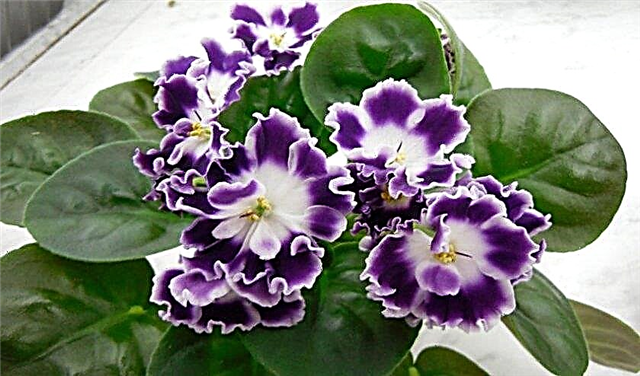 The laying technology is as follows:
The laying technology is as follows:
- Lay the drainage layer on the bottom, which should occupy 1/3 of the height of the pot.
- Fill a small layer of soil.
- Set the roots of violets.
- Cover the remaining ground without tamping it.
When placing a flower in the ground, it is necessary to ensure that the growth point is not filled up, the roots are not bent, and the lower leaves do not touch the ground. The first watering will need to be done after a week, and the first top dressing - not earlier than after 2 weeks (if additional fertilizers were not applied during planting).
Summing up, we note that the cultivation of violets is associated with certain troubles. The most important thing is to choose the right place for it with good lighting and the recommended soil composition, as well as ensure competent watering. But all the care efforts are more than compensated by the unique look of bright and abundantly blooming violets.

